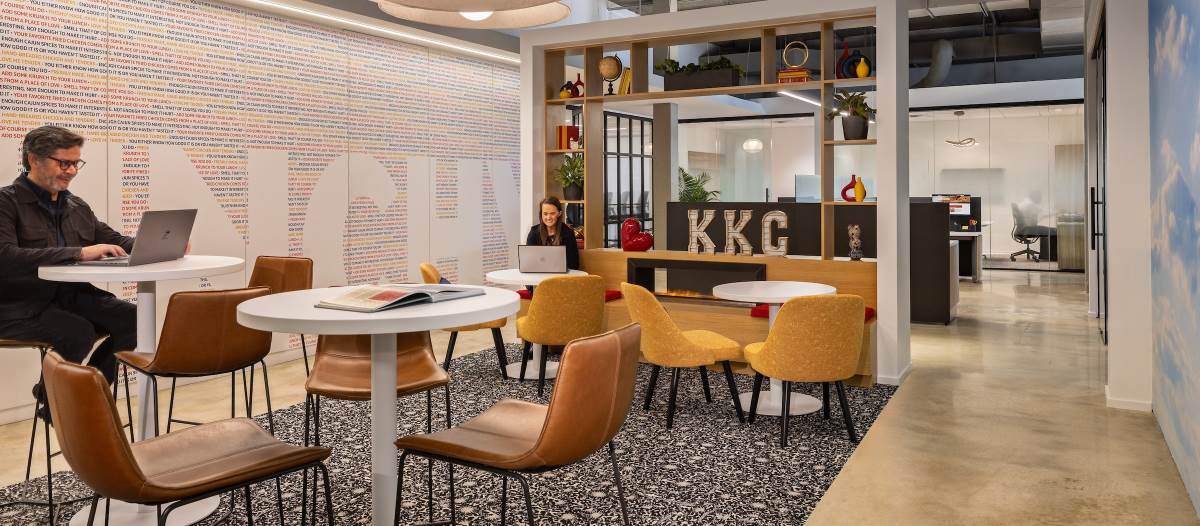High Priority
Addressing IAQ in the time of COVID-19

The value of indoor air quality is more important than ever. Assuring a clean, healthy environment for those who work in and visit commercial and industrial buildings remains a top priority for facility managers — especially as people continue adjusting to life in a pandemic. And while energy efficiency has been the focal spot of advanced ventilation control, it is time – especially in light of COVID-19 - that the indoor air quality (IAQ) must be considered an equal priority.
The good news is that carbon dioxide (CO2) is a proven indicator of IAQ. The level of CO2 in rooms and other indoor spaces is commonly used as an input for demand-controlled ventilation as part of a building automation system. With good ventilation being extremely important to keep the air fresh and healthy in buildings, sufficiently low CO2 levels tell us that the ventilation system is doing its job properly. As a result, CO2 measurement is playing a vital role in understanding how effective a building ventilation system might be, which is fundamental to maintaining proper and healthy IAQ and a key component in decreasing risks people’s health.
Focusing on energy efficiency & IAQ
Heating, ventilating and air conditioning (HVAC) systems work to maintain good IAQ through adequate ventilation with filtration. However, these systems are among the largest consumers of energy in offices and other large buildings.
While green building initiatives encourage commercial building construction companies and building operators to reduce their environmental impact through increased energy efficiency, 30 percent of the energy used in commercial buildings, on average, is still wasted, according to the U.S. Environmental Protection Agency. Consequently, it is no surprise that energy efficiency has been the focus of advanced ventilation control in recent years. At the same time, IAQ in the workplace cannot be overlooked while FMs aim to reduce energy costs.
With countless studies showing that most people spend 90 percent of their time indoors, the potential impact of IAQ on human health is enormous. COVID-19 has put the issue of healthy indoor air into a brighter spotlight.
A recent survey ordered by Vaisala, a measurement technology company, reveals that people would feel safer with more data on IAQ. Conducted in the summer of 2021, the survey, which included more than 4,000 respondents in the U.S., France, Germany and Finland, found that more than one-third of the respondents are concerned about the IAQ in their place of work, and more than half said that concerns with IAQ impact their motivation to visit public spaces.
In the U.S. alone, the survey showed the following information:
-
36 percent of respondents have concerns or are unsure of safely returning to their workplace.
-
56 percent would feel safer with more information about IAQ in their workplace, and 66 percent would feel safer with more information about IAQ in public spaces.
-
43 percent are concerned about the IAQ in their workplace, with 65 percent concerned about IAQ in public spaces.
-
69 percent are extremely or somewhat concerned about IAQ having an impact on their motivation to travel.
While vaccination rates are high in the surveyed countries, the survey highlights the elevated levels of concern individuals have with air quality in indoor spaces. This is all the more reason that industry leaders are investing in good ventilation control using reliable CO2 measurement as the best way to ensure the simultaneous achievement of both energy efficiency and employee well-being.
Carbon dioxide as a proven indicator of IAQ
IAQ issues are created when a limited amount of fresh air is circulated throughout the work environment or polluted outside air is circulated into the workplace. From eye, nose and throat irritation, headaches, dizziness and fatigue to respiratory diseases, heart disease and even cancer, both immediate and long-term health concerns are, in many cases, directly linked to IAQ.
Poor IAQ can stem from myriad sources, including the use of chemicals in carpets and furniture, poor quality of outside air, organic compounds contained in electrical transformers, radiation from insulation, solvents in cleaners, the HVAC system itself and toxic gases. But one often-ignored cause of indoor air pollution is natural: humans exhaling CO2.
Insufficient ventilation allows potentially hazardous high concentrations of CO2 produced by human breathing to accumulate, thereby substantially decreasing employee health, well-being and productivity. While CO2itself is not toxic to humans, it does replace oxygen, meaning high concentrations can be lethal. According to research, even levels not lethal to humans can cause physical symptoms and impair brain function. High CO2 levels are especially detrimental to higher mental functions like decision-making, strategic thinking, crisis response and learning.
The three cognitive abilities most significantly impacted by CO2 concentration are crisis response, information usage and strategy, which are all critical in the workplace. The inability to effectively manage and respond to a crisis can lead to dangerous mistakes. A decreased ability to use information obviously has a negative impact on how employees learn and their rate of productivity. Bad strategy can lead to delayed or poor decision making, which can impact an organization’s bottom line.
Studies from 2016 and 2017 found that breathing better air leads to significantly better decision-making performance among participants who were exposed to increased ventilation rates and lower levels of chemicals and carbon dioxide. These finding make it is easy to understand the importance of ensuring good IAQ over unnecessarily strict energy management.
However, until recently, symptoms related to high CO2 levels were not seen as a powerful enough motivator to encourage FMs to focus on ensuring sufficient ventilation. This changed with COVID-19, altering perspective for good. Most people intuitively understand that the risk of infection is higher in indoor spaces where people are near one another and where ventilation is insufficient.
Because CO2 is emitted in commercial and office buildings by humans breathing and not by many other sources, CO2 measurement provides a solid indicator of ventilation effectiveness and the IAQ in buildings where the occupants and their activities are the primary source of pollution. The amount of CO2 in the air is a good indicator of indoor air pollutants originating from people, and these pollutants can also include viruses such as SARS-CoV-2.
Demand-controlled ventilation for healthy indoor environments
Building safety is a critical demand, and building owners are increasingly investing in advanced HVAC equipment and technologies to improve in-building air quality. While there are several ways to measure IAQ, the most common parameters that HVAC experts look at are total volatile organic carbons, particulate matter, humidity and temperature, and carbon dioxide.
These parameters can be used automatically as an input to ventilation and building management systems so that IAQ can be optimized. However, there are challenges that come with classification and measurement, making it difficult to obtain a tight dataset from which decision-makers should base control decisions, especially those made in real time.
Enter demand-controlled ventilation (DCV). With this proven approach the ventilation intensity is typically adjusted to correspond with the true need to save energy – but the same principle can be applied to the health of indoor space. DCV has clear advantages especially when occupancy varies widely, such as in schools, office spaces, conference centers and auditoriums. The CO2 level in a space indicates human presence and can be used to control ventilation. The efficiency of DCV can only be optimized by accurate CO2 sensing.
By using CO2 sensors FM professionals can rest easy knowing the measurements provided are not only accurate but can be traced to internationally recognized standards for maintaining proper, healthy IAQ. Monitoring CO2 levels in indoor spaces empowers FMs to better understand where better ventilation is required, as well as when the risk of COVID-19 transmission is high.
Today, there is no real-time continuous IAQ measurement as reliable as CO2 measurement. Even though CO2 measurement will not reveal the presence of respiratory droplets carrying the highly transmissible virus causing COVID-19, CO2 is a trusted parameter for the evaluation of ventilation effectiveness, thereby making it a key contributor to maintaining safer, healthier and more productive work environments.
As the world of work inches closer to pre-pandemic levels of normalcy, FMs are making decisions that impact people’s lives, their health and safety, and their comfort, as well as the energy their building uses. Since CO2 measurement is a proven method to help inform the IAQ — and thus the safety of an indoor space — advanced CO2 sensors can help facility decision-makers reach the safest possible conclusion to maintain a safe workplace.

Anu Kätkä is a global product management in industrial measurements at Vaisala. She has extensive experience in building automation and management systems, metering and monitoring solutions. Kätkä holds master’s degrees in both engineering and economics.
Read more on Occupancy & Human Factors and Real Estate
Explore All FMJ Topics









